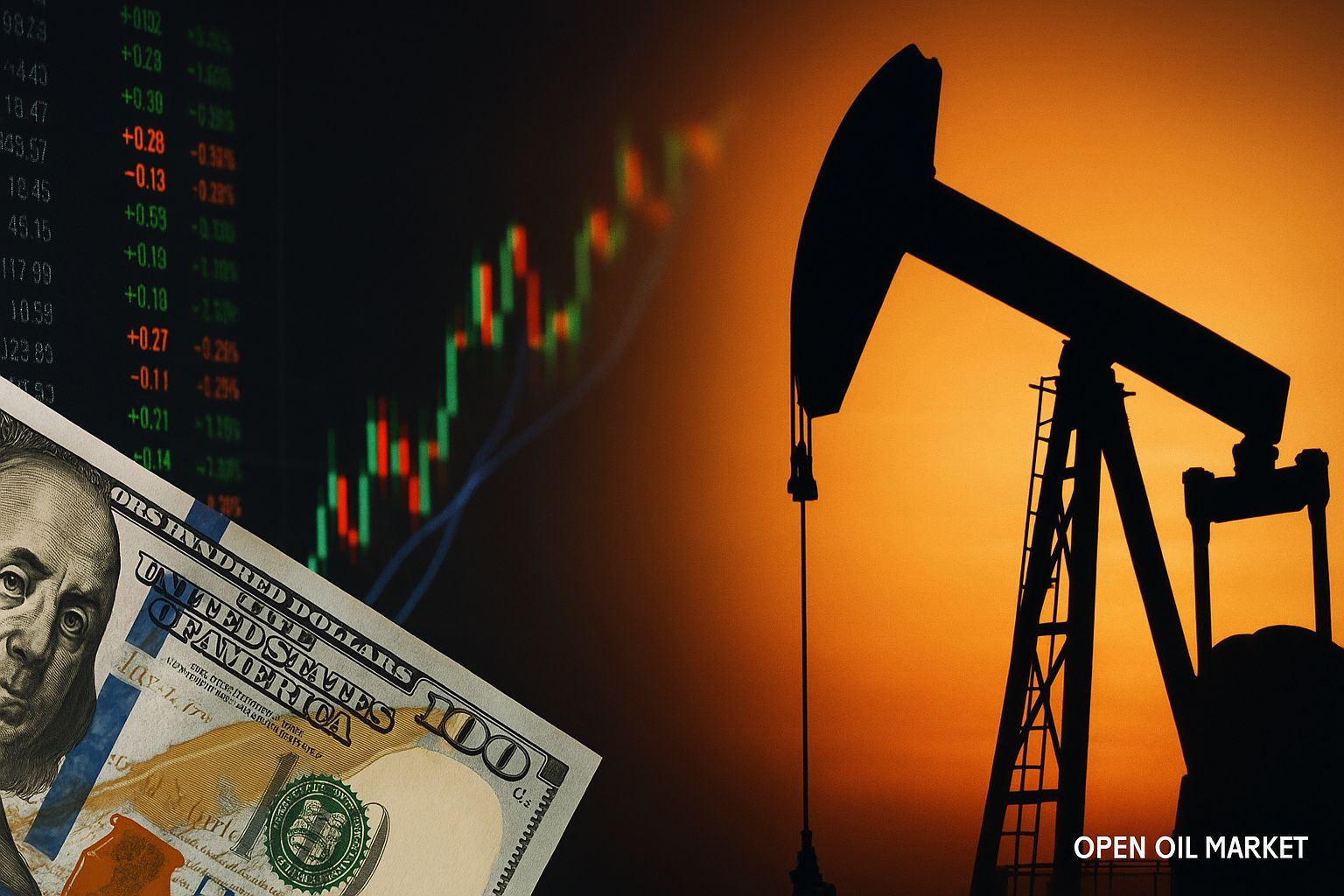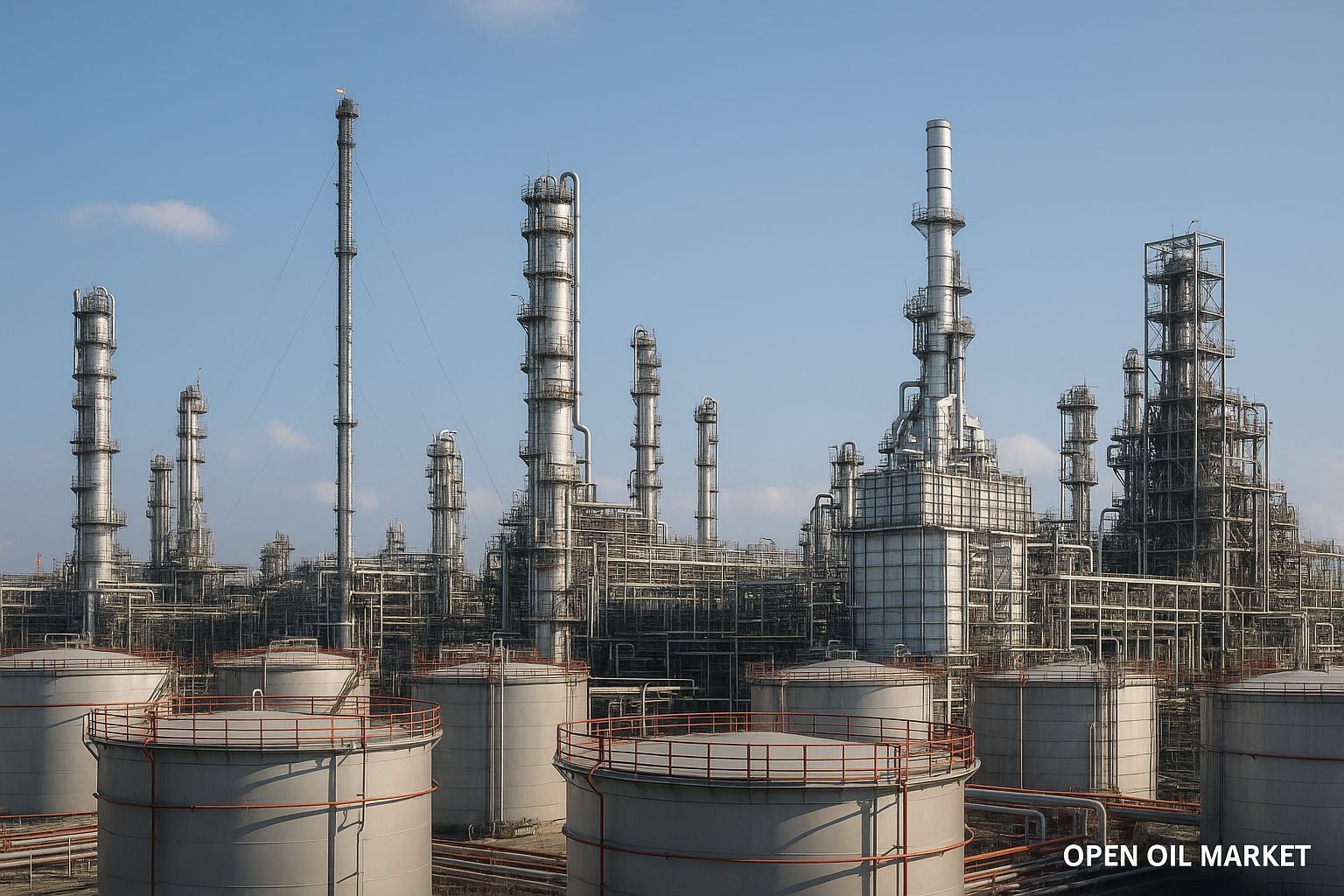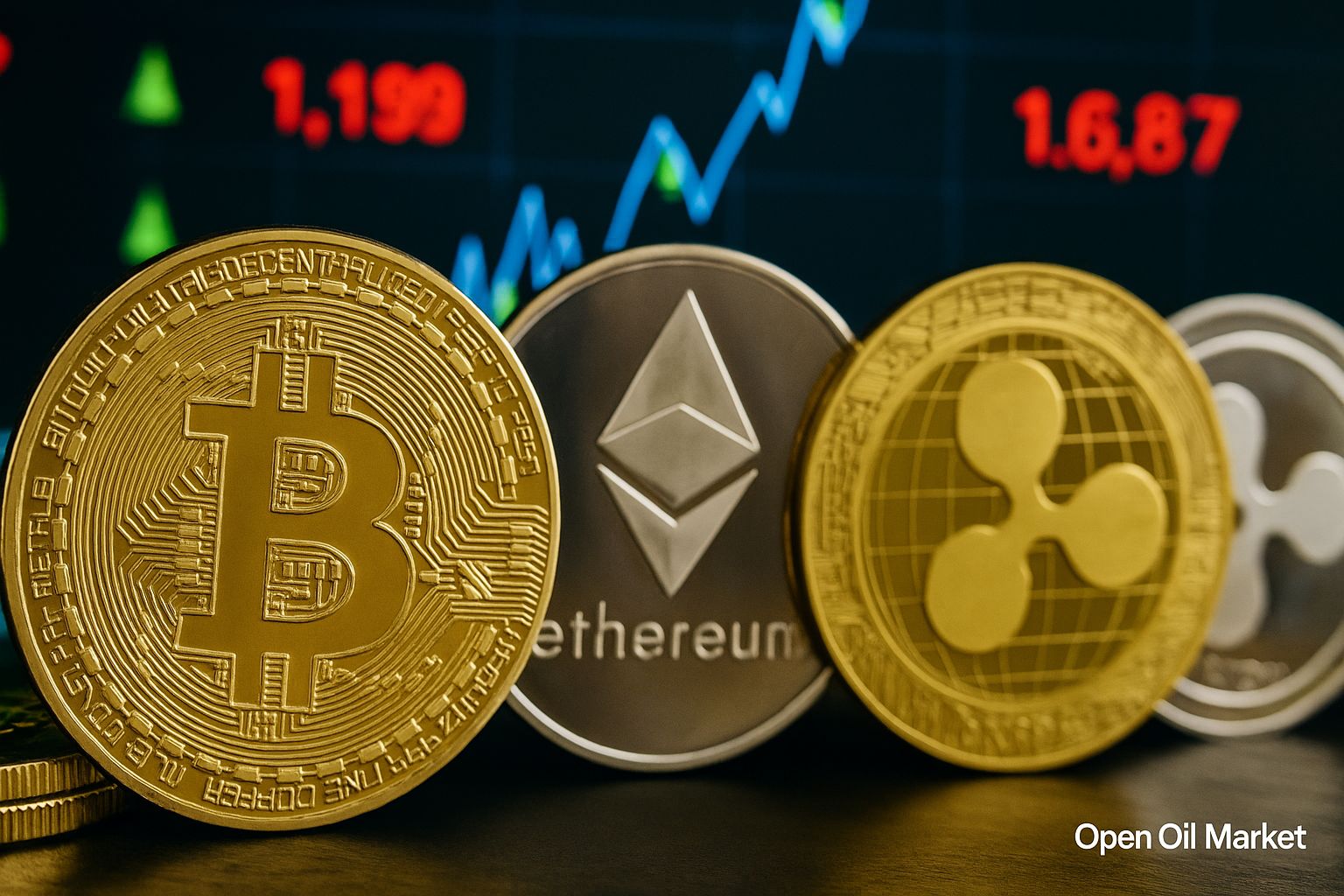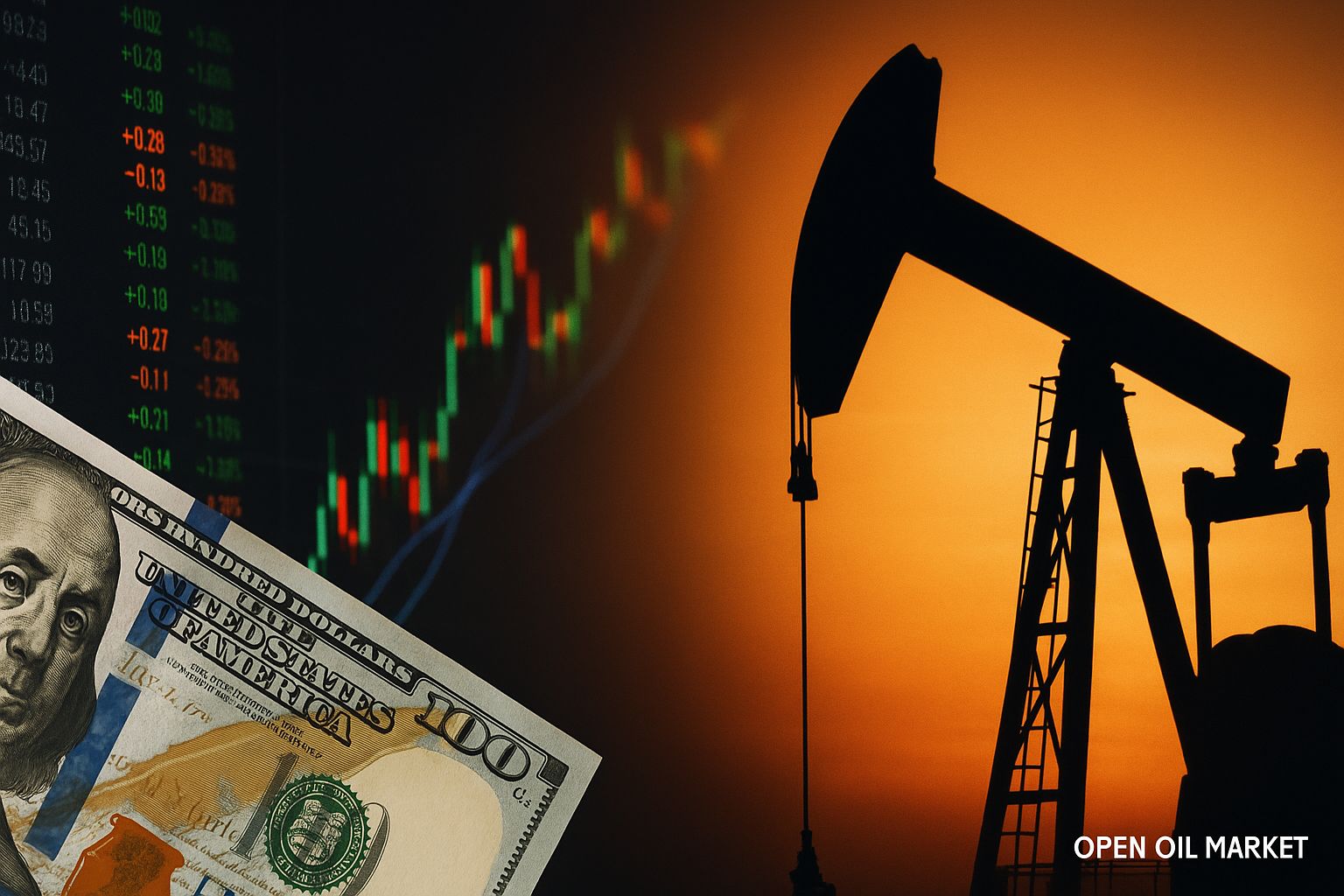
Detailed Review of Economic News on August 24, 2025: Fed's Signals on Rate Cuts, Recession in Germany, China's Economic Stimulus Measures, and Alibaba's Report. Analyzing the Situation for Investors.
Global financial markets are concluding the week on a mixed note. On one hand, the signal from the Federal Reserve regarding an imminent easing of monetary policy has encouraged investors and driven stock indices upwards. On the other hand, weak economic data from Europe, particularly the renewed downturn in Germany's economy, adds a level of caution. In Asia, Chinese authorities are promising new stimulus measures to support growth, while inflation in Japan remains above target levels. Investors from the CIS countries are still focused on interest rate dynamics: the Fed is preparing to transition to rate cuts, while the Bank of Russia is evaluating further steps following its recent sharp policy easing. Below is a detailed overview of the key economic news as of August 24, 2025, prepared in a business style for investors.
US Fed Hints at Easing Policy
The speech by Fed Chairman Jerome Powell at the annual symposium in Jackson Hole delivered a strong signal regarding a possible reduction in the key rate at the upcoming September meeting. Powell noted that economic conditions could "justify an adjustment" in policy: US economic growth has noticeably slowed (GDP expanded by only ~1.2% year-on-year in the first half of the year), the labor market is cooling, and inflation has approached target levels. These comments have strengthened expectations that the regulator will shift its focus from fighting inflation to supporting growth. Futures markets are pricing in nearly a 90% probability of a 0.25 percentage point rate cut in September, marking a significant shift in market sentiment compared to the beginning of summer.
The market response to the Fed's dovish tone was swift. The yields on long-term US Treasury bonds fell, reflecting expectations of a more accommodative monetary policy. Simultaneously, the US dollar weakened against most currencies: the dollar index DXY retreated to around 98-99 points, while the EUR/USD exchange rate climbed to approximately $1.20. Lower yields and a weaker dollar enhance the attractiveness of risky assets and precious metals—the price of gold remains elevated, reflecting expectations of Fed policy easing.
US Markets: Rise Amid Expectations of Rate Cuts
The US stock market finished the week with a strong uptick. On Friday, Wall Street indices surged significantly after Powell's speech: the S&P 500 gained about 1.7% for the session, while the Dow Jones and Nasdaq also closed positively. Overall, for the week, the S&P 500 and Nasdaq reached new year-to-date highs, continuing their upward trend. Investors actively bought shares of tech giants and other growth companies, anticipating that the Fed's policy easing would lower borrowing costs and support high stock valuations. Even cyclical sectors sensitive to economic conditions (industrials, materials) managed to post gains on hopes of stimulus measures.
It is worth noting that the macroeconomic backdrop in the US remains relatively favorable. Inflation continues to slow—year-on-year growth in the consumer price index hovers around 2.7%, approaching the 2% target. The labor market is showing signs of cooling: recent data revealed an unemployment rate rise to ~4.2% and the lowest growth in new jobs in several years. These factors, on one hand, ease fears of an overheating economy, while on the other, strengthen arguments for a rate cut. As a result, many investors maintain their risk appetite: the FOMO ("fear of missing out") effect remains evident after one of the best starts to a year on Wall Street in decades. The market is now awaiting the Fed's official decision and new data on the US economy to validate the anticipated shift in policy.
Europe: Germany's Economy in Recession
In Europe, more concerning news dominates. Preliminary data shows that Germany's GDP contracted in the second quarter of 2025, re-entering a downturn in the largest economy of the Eurozone. After modest growth in the first quarter, German GDP has returned to negative territory, effectively putting the country on the brink of recession. The decline is attributed to a decrease in industrial production and export demand, particularly from China, as well as high energy costs. The slowdown in Germany is dragging down overall Eurozone performance: estimates suggest that the collective growth of the currency block's economy in Q2 was close to zero.
European stock markets responded cautiously. The pan-European Euro Stoxx 50 index changed little for the week, balancing between the positive developments from the US and local negative factors. Investors hope that the European Central Bank will soften its rhetoric amid the weak economic backdrop. Inflation in the Eurozone is gradually decreasing (around 3% year-on-year in July compared to 3.4% in June); however, core price growth remains elevated at about 3.5%. The ECB, during its meeting at the end of July, had already halted rate increases, signaling a nearing peak in the tightening cycle. Given the challenges in Germany and other countries, expectations are growing that the regulator could take a prolonged pause or even consider rate cuts to avoid exacerbating the downturn. In the currency market, the euro has managed to strengthen against the backdrop of a weakening US dollar, but the future trajectory of the European currency will depend on the actions of the ECB and the state of the economy.
Asia: Chinese Stimuli and Japan's Stability
In Asia, the focus is on China's economic support measures and Japan's monetary policy. Chinese leadership assured last week that it would continue to stimulate domestic consumption and the housing market, aiming to achieve an annual GDP growth target of around 5%. Premier Li Qiang highlighted in a meeting that authorities are preparing "decisive" steps to maintain stable growth, ranging from easing property purchase restrictions to industry stimulus. These statements came amidst a series of weak economic indicators in China: growth in industrial production and retail sales has slowed while producer prices are in deflation. The People's Bank of China kept the benchmark lending rates unchanged during its meeting on August 20, as expected, but previously in June had implemented several reserve requirement cuts and targeted liquidity measures. Investors are anticipating that Beijing will introduce additional fiscal stimuli in the second half of the year if necessary.
Japan, on the contrary, is demonstrating relative stability. The inflation rate in July stood at 3.1% year-on-year, slightly down from 3.3% in June but still above the Bank of Japan's target level of 2%. Nevertheless, the Japanese regulator maintains an ultra-easy monetary policy, believing that the current price increases are largely imported and temporary. Against this backdrop, the Nikkei 225 stock index remains close to its maximum levels in recent decades—supported by strong corporate results and a weak yen. The yen's depreciation (which has lost about 5% against the dollar over the year) enhances export competitiveness, which is reflected in the profit growth of giants like Toyota and Sony. Overall, Asian stock markets concluded the week with gains, considering global optimism following Fed signals and promised stimuli from China, although lingering uncertainty around the Chinese economy limits the rally's scale.
Russia: Rate Cuts and Market Growth
The Russian economy is being supported by the easing of monetary policy and favorable external conditions. The Bank of Russia cut the key interest rate by 2 percentage points at the end of July, down to 18% per annum, beginning a cycle of easing after a previous period of tight measures. The Central Bank's leadership does not rule out further rate cuts by the end of the year—analysts forecast that by early 2026, the rate could drop to ~12-13% per annum if inflation continues to slow. So far, inflation in Russia has stabilized after a surge in the first half of the year: the current annual price growth rate is estimated at around 7-8%, and the regulator expects this figure to fall closer to 6% by the year's end. In August, however, public inflation expectations have slightly risen again, which requires caution from the Central Bank in its further decisions.
The Russian stock market reacted to the rate cut with a significant rise. The MOEX index surged in response to inflows of liquidity and improved investor sentiment, surpassing the 3500 points mark for the first time in several years. A decrease in interest rates enhances the attractiveness of stocks compared to deposits, and many market participants are redirecting capital into corporate securities. Additional positivity for the Russian market comes from persistently high energy prices: Brent crude is trading above $85 per barrel, supporting the income of the Russian oil and gas sector. The ruble slightly strengthened by the end of the week amid increased export revenues, stabilizing in the range of 88-90 rubles per US dollar. However, experts warn that further active cuts in the Central Bank's rate could create new pressure on the ruble's exchange rate, therefore balancing economic stimulus with financial stability will be a priority for the regulator.
Corporate Reports: Season Summary
The concluding earnings season has shed light on the state of the largest companies worldwide. In the US, most companies in the S&P 500 reported better than expected results, despite the economic slowdown. Tech leaders continued to delight investors: earlier in August, Apple, Amazon, Meta, and Alphabet posted strong revenue and profit growth, largely thanks to high spending on cloud services and artificial intelligence. Several industrial cyclicals also exceeded forecasts, although they provided cautious guidance for the second half of the year. Major retail chains demonstrated resilience in consumer demand—Walmart reported growth in comparable sales in the US, while Target's figures remained stable despite inflation's impact on consumer spending.
In Europe, the picture is more uneven. Export-oriented companies are struggling due to weak external demand: for example, German automakers reported a decline in sales in the Chinese market in Q2. Meanwhile, European banks and energy companies posted high profits, benefiting from rising interest rates (for banks) and high commodity prices (for the oil and gas sector). The Euro Stoxx 50 index of companies' earnings for the past quarter on average exceeded analysts' expectations, although revenue growth was more modest, reflecting subdued demand in the economy.
The Asian corporate sector also attracted investors' attention. Chinese tech giant Alibaba released a financial report demonstrating revenue and profit growth above forecasts. Alibaba's improved results indicate a gradual recovery in consumer activity in China and the effectiveness of the cost optimization measures taken by the company. Other Chinese firms, such as Baidu and Tencent, also reported increases in income from cloud services and new technology directions, despite the overall economic weakness. In Japan, corporate reports pleased shareholders: many electronics and automotive producers showed profit increases, helped by a weak yen and a recovery of supply chains. In Russia, the earnings season is just gaining momentum—investors are awaiting the publication of results from major state banks and commodity companies in the coming days. Preliminary signals are positive: for instance, mining companies hint at strong performance due to favorable pricing conditions.
Key Indices and Commodity Markets
- S&P 500 (USA): +2.4% for the week, closing around 4700 points. The index is at year-to-date highs, boosted by the technology sector's growth and expectations of Fed rate cuts.
- Euro Stoxx 50 (Europe): +0.3% for the week, around 4350 points. The European market remained positive despite weak data from Germany, supported by optimism around global trade and the ECB's soft policy.
- Nikkei 225 (Japan): +1.1% for the week, around 33,000 points. The Japanese index is close to 30-year highs due to a weak yen and strong corporate results.
- MOEX Index (Russia): +2.8% for the week, around 3520 points. The Russian market leads in dynamics due to rate cuts and high oil prices.
- Brent Oil: $86 per barrel, up approximately $2 for the week. Oil prices are supported by OPEC+ production cuts and strong demand, despite concerns about China's economy.
- Gold: $1980 per troy ounce, with no significant change for the week. The precious metal remains near highs, balancing between lower yields in the US and the overall risk appetite in the markets.
- USD/RUB: 89.5 rubles per $1, ruble strengthening by 1.5% for the week. The Russian currency received support from export revenues and currency sales, although the potential for further strengthening is limited under the Central Bank's easing policy.
Overall, the news of recent days reflects a shift in global economic trends. The Fed's easing rhetoric and signs of slowing inflation inspire optimism among investors worldwide, propelling stock indices higher. Simultaneously, individual regions face local challenges: Europe grapples with the threat of recession, China seeks to boost its economy with stimuli, and Russia balances between rate cuts and currency stability. Market focus is now shifting to upcoming decisions by regulators and new macroeconomic data at the beginning of autumn—they will reveal how resilient the current optimism is and whether hopes for a "soft landing" of the global economy are justified.




